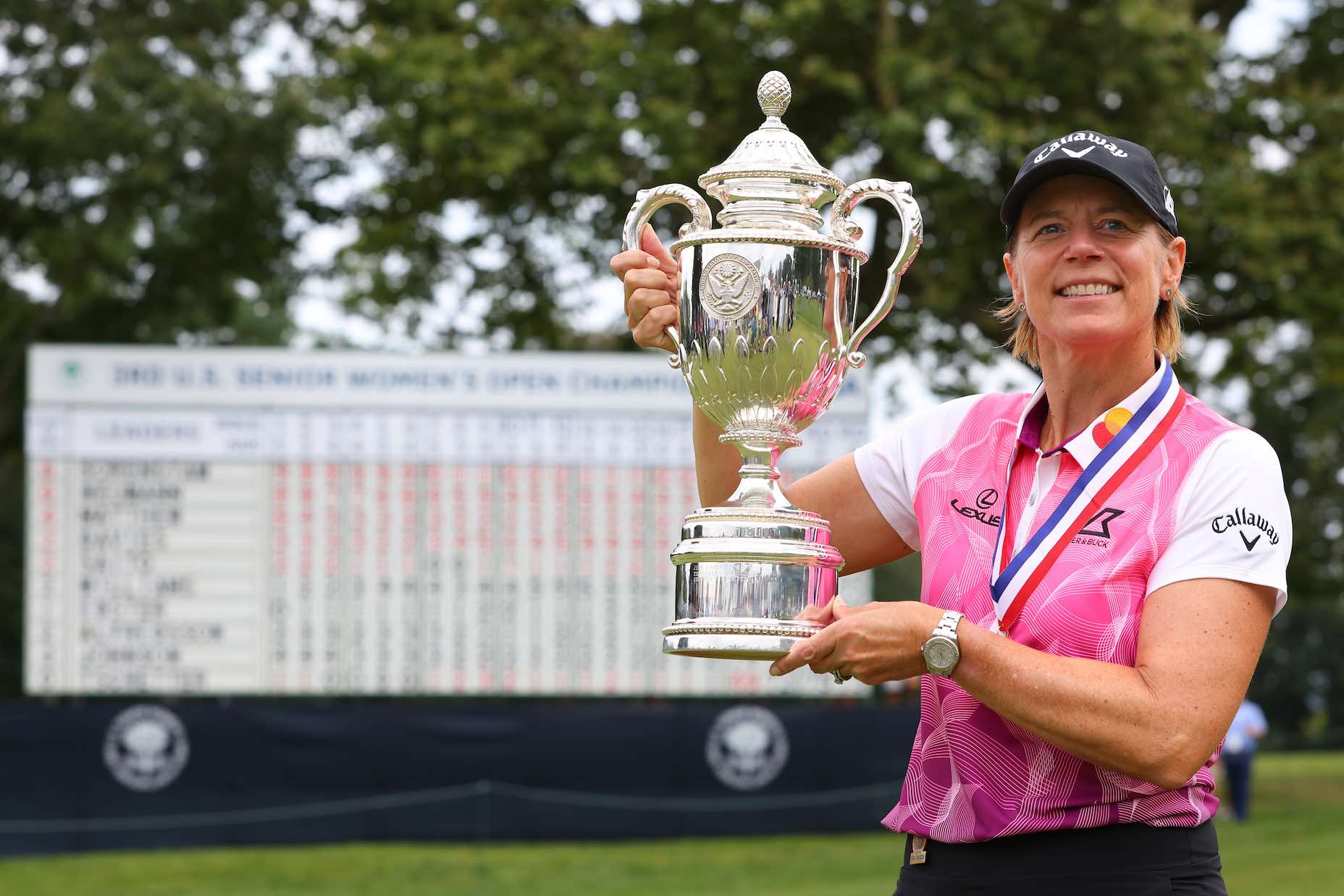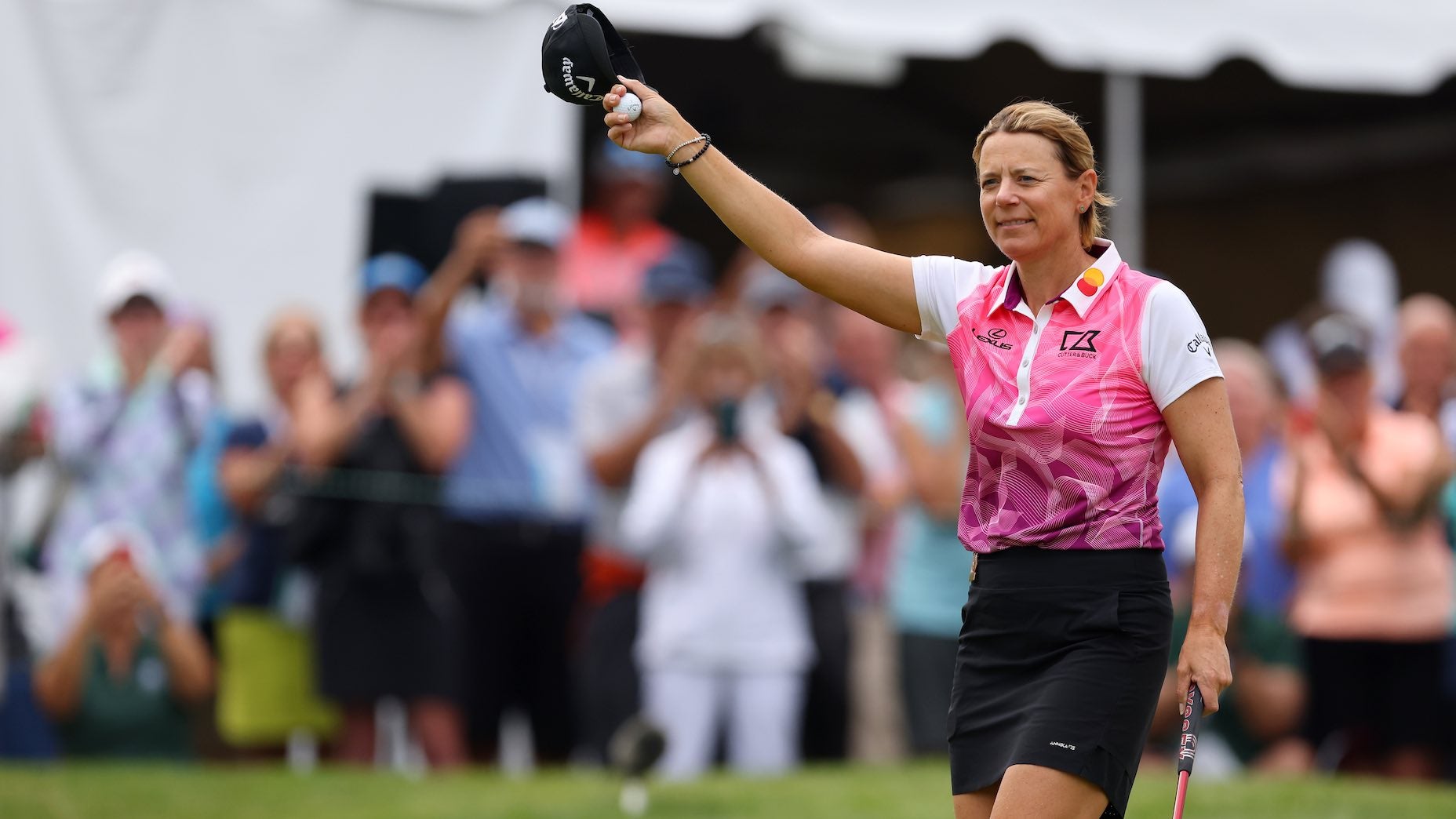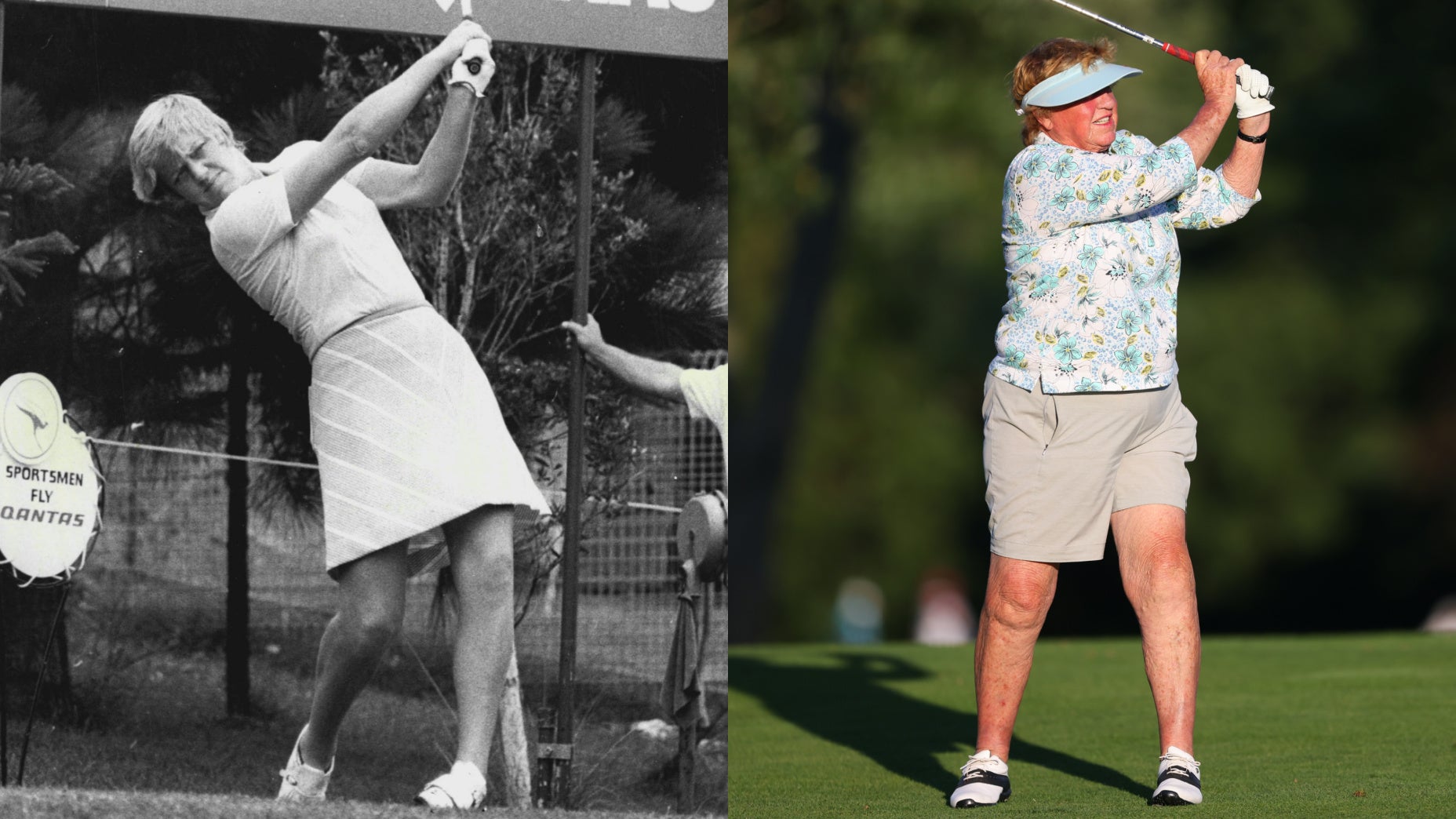FAIRFIELD, Conn. — How you like your time warps? Try out this one:
No rope lines.
Classic course with wild greens.
Creaking-floor clubhouse, with snaps of local boys who made good — Gene Sarazen, Julius Boros — on the walls.
Gold medal (and a theoretical check for $180,000) waiting on the porch for the winner.
And the winner: Annika Sorenstam. She won by eight over her fellow Swede, Liselotte Neumann.
Let’s Do the Time Warp Again.
The theme song of this third U.S. Senior Women’s Open, held at the very excellent Brooklawn Country Club.
If you like the Country Club in Brookline, Mass., and Rolling Green, near Philadelphia, and Interlachen near Minneapolis, you’ll like this Brooklawn. The course, designed by A.W. Tillinghast, is tucked in a neighborhood of tall trees and wide sidewalks. The American dream.
How JoAnne Carner keeps playing record-setting golf at 82 years-oldBy: Luke Kerr-Dineen
Sorenstam, who won the U.S. Open in 1995, 1996 and 2006, played her final U.S. Open in 2008, at Interlachen. The U.S. Senior Women’s Open was not even a dream then. (The first was held 10 years later.) So this event was Annika’s first USGA event in 13 years. Her first USGA event with her husband, Mike McGee, as her caddie. (McGee’s father was Jerry McGee, a four-time winner on Tour who died in March.) Her first USGA event as a mother of two. Her son and daughter traipsed up and down Brooklawn’s hills, following their mother.
Or, if this is not too personal, their mama. It’s a Swedish thing. Our “mom’s apple pie” is their “mammas äppelpaj.” (As they made their way around the course, Neumann and Sorenstam spoke English when others were around and Swedish when it was just the two of them. They’ve known each other forever.)
Last October, Sorenstam turned 50. That qualified her for this tournament — by age. Next came desire. The third step was family approval.
As she told reporters Sunday night, standing on the Brooklawn porch, she asked her kids, “Do you want to see mama play?”
Their response, per mama: “Yes, we want to see mama play.”

Turns out about 2,000 others wanted to see the return of the legend, too. That is, in person. Jane Geddes, the 1986 U.S. Open winner, was among them. She missed the cut but stayed the weekend and watched Annika make her way around the course, McGee carrying a smallish bag with a stand on it. Neumann had a similar bag.
Neumann had to make a four-footer on the last for solo second, one stroke ahead of Laura Davies. Soon after, she said, position-for-position, Sorenstam’s swing is essentially unchanged from her long playing prime. Her speed is not what it was, not that speed was ever her calling card. But her rhythm and her positions looked completely familiar. The swing as metronome.
Sorenstam’s rounds on the par-72 course, were 67, 69, 72 and 68. From Thursday on, there didn’t seem to be much question as to who would win. She was better than everybody else.
It’s been some year for Sorenstam. She went to the White House to receive the Presidential Medal of Freedom—on Jan. 7. In early July, she became one for the first three female members at Pine Valley. She won her first Senior Open. On Monday, as president of the International Golf Federation and a key figure in the golf-in-the-Olympics movement, she will fly to Tokyo for the women’s Olympic golf competition. No, she’s not playing. She’ll be there, to borrow Stefan Schauffele’s word, to observe.
Annika didn’t stay up too late on Saturday, watching the men in Tokyo. She had a 12:45 tee time on Sunday at Brooklawn, and had a TV plan for Sunday morning, to catch up on it.
(She was always a player with a plan. When she made a quick jog to the clubhouse after holing out on 14, she emerged with her yardage book in her right hand.)
But her Sunday-morning plan was spoiled when her son, Will, waltzed in to announce that . . . Xander had won!
That’s OK. She had other matters to tend to.
“It was great for golf,” she said of the men’s competition in Tokyo, with a gold medal of her own hanging around her neck. “I look forward to watching the women. I know it’s been a lot of hassle, to put the Games together. I look forward to going there, and hopefully the women can put on a great show and show why golf should be in the Olympics.”
Annika put on a great show, at Brooklawn. Annika showed why the U.S. Women’s Senior Open is just a gem of an event. Annika showed where talent goes when you put it on ice for 13 years.
Nowhere.
Michael Bamberger welcomes your comments at Michael.Bamberger@Golf.com.


